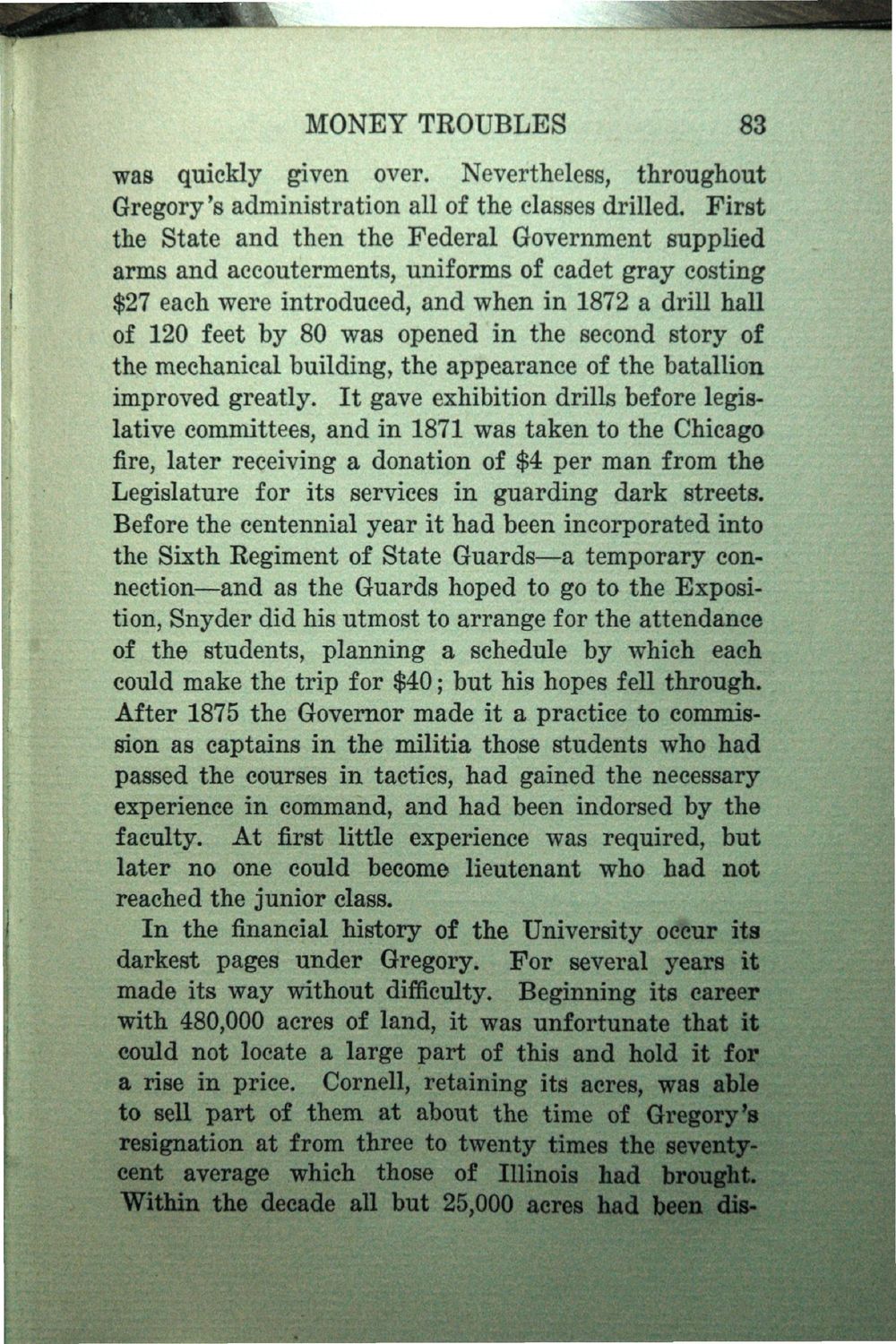| |
| |
Caption: Book - History of the University (Nevins)
This is a reduced-resolution page image for fast online browsing.

EXTRACTED TEXT FROM PAGE:
MONEY TROUBLES 83 was quickly given over. Nevertheless, throughout Gregory's administration all of the classes drilled First the State and then the Federal Government supplied arms and accouterments, uniforms of cadet gray costing $27 each were introduced, and when in 1872 a drill hall of 120 feet by 80 was opened in the second story of the mechanical building, the appearance of the batallion improved greatly. It gave exhibition drills before legislative committees, and in 1871 was taken to the Chicago fire, later receiving a donation of $4 per man from the Legislature for its services in guarding dark streets. Before the centennial year it had been incorporated into the Sixth Regiment of State Guards—a temporary connection—and as the Guards hoped to go to the Exposition, Snyder did his utmost to arrange for the attendance of the students, planning a schedule by which each could make the trip for $40; but his hopes fell through. After 1875 the Governor made it a practice to commission as captains in the militia those students who had passed the courses in tactics, had gained the necessary experience in command, and had been indorsed by the faculty. At first little experience was required, but later no one could become lieutenant who had not reached the junior class. In the financial history of the University odfeur its darkest pages under Gregory. For several years it made its way without difficulty. Beginning its career with 480,000 acres of land, it was unfortunate that it could not locate a large part of this and hold it for a rise in price. Cornell, retaining its acres, was able to sell part of them at about the time of Gregory's resignation at from three to twenty times the seventycent average which those of Illinois had brought. Within the decade all but 25,000 acres had been dis-
| |